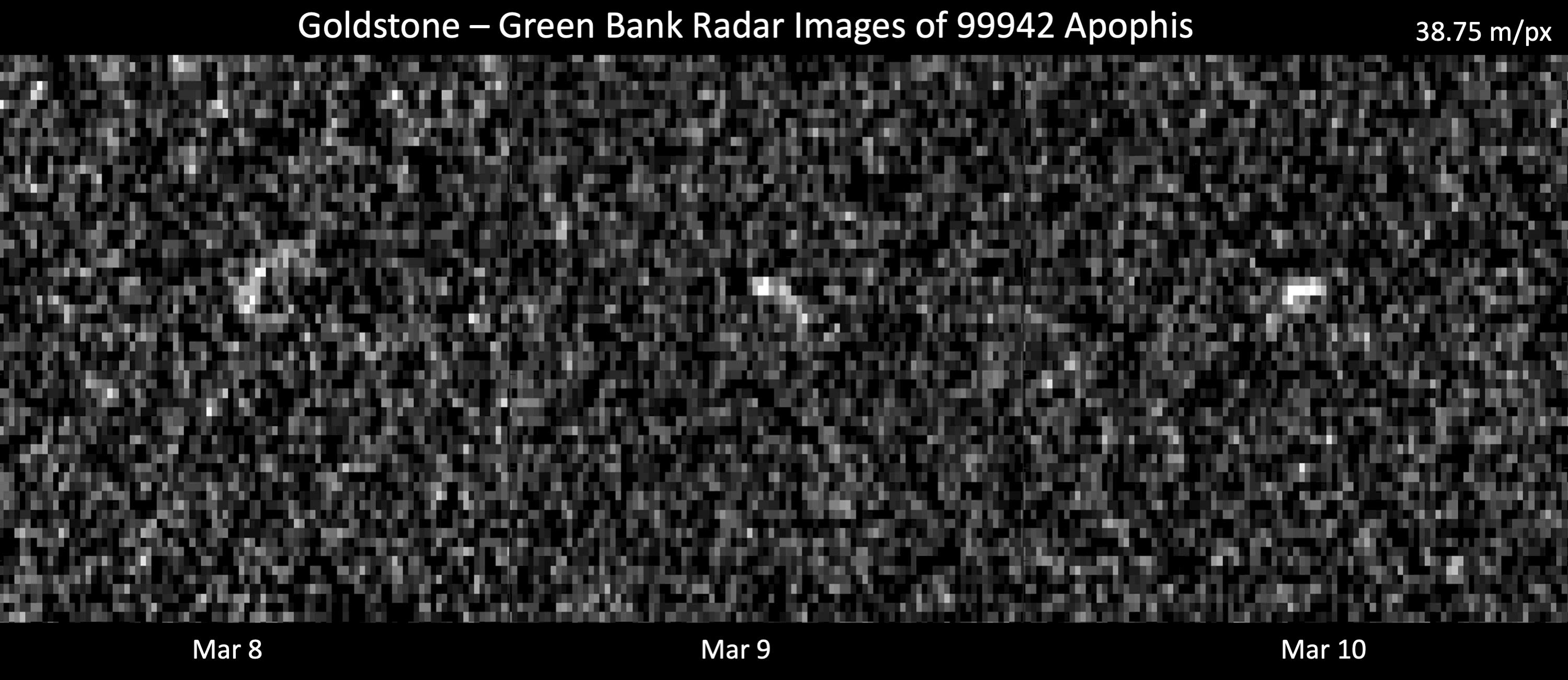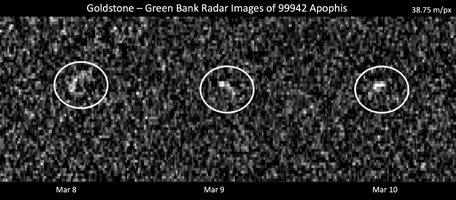
|
Radar Observations of Asteroid 99942 Apophis
- Click the image above for a larger view
- Full-Res JPEG (2999 x 1300) (419.4 kB)
- Full-Res TIFF (2999 x 1300) (1.7 MB)
Caption:

Figure 1
These images represent radar observations of asteroid 99942 Apophis on March 8, 9, and 10, 2021, as it made its last close approach before its 2029 Earth encounter that will see the object pass our planet by less than 20,000 miles (32,000 kilometers). The 70-meter radio antenna at the Deep Space Network's Goldstone Deep Space Communications Complex near Barstow, California, and the 100-meter Green Bank Telescope in West Virginia used radar to precisely track Apophis' motion. At the time of these observations, Apophis was about 10.6 million miles (17 million kilometers) from Earth, and each pixel has a resolution of 127 feet (38.75 meters).
Relying on optical telescopes and ground-based radar to help characterize every near-Earth object's orbit to improve long-term hazard assessments, CNEOS computes high-precision orbits in support of NASA's Planetary Defense Coordination Office .
Background Info:
These observations helped scientists of the Center for Near Earth Object Studies ( CNEOS ), managed by NASA's Jet Propulsion Laboratory, precisely determine the 1,100-feet-wide (340-meter-wide) asteroid's orbit around the Sun, ruling out any Earth impact threat for the next hundred years or more. As a result of these observations, Apophis was removed from the Sentry Impact Risk Table . The radar team will continue to analyze these observations to determine more information about Apophis' size, shape, and rate of spin.
For more information about CNEOS, see: https://cneos.jpl.nasa.gov/
Cataloging Keywords:
| Name | Value | Additional Values |
|---|---|---|
| Target | 99942 Apophis | |
| System | Near Earth Objects | |
| Target Type | Asteroid | |
| Mission | Deep Space Network (DSN) | |
| Instrument Host | Goldstone Deep Space Communications Complex (GDSCC) | |
| Host Type | Ground-Based Observatory | |
| Instrument | Goldstone Solar System Radar | |
| Detector | ||
| Extra Keywords | Grayscale, Impact, Radar, Radio, Rotation | |
| Acquisition Date | ||
| Release Date | 2021-03-26 | |
| Date in Caption | ||
| Image Credit | NASA/JPL-Caltech and NSF/AUI/GBO | |
| Source | photojournal.jpl.nasa.gov/catalog/PIA24168 | |
| Identifier | PIA24168 | |
